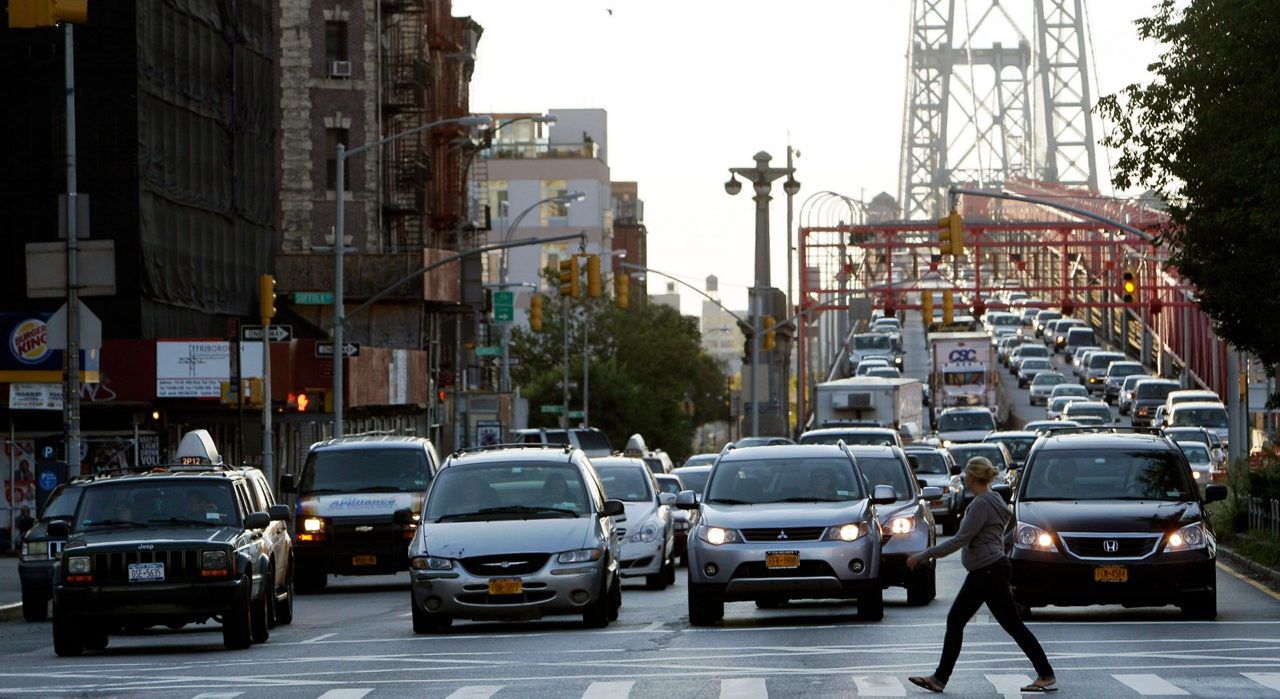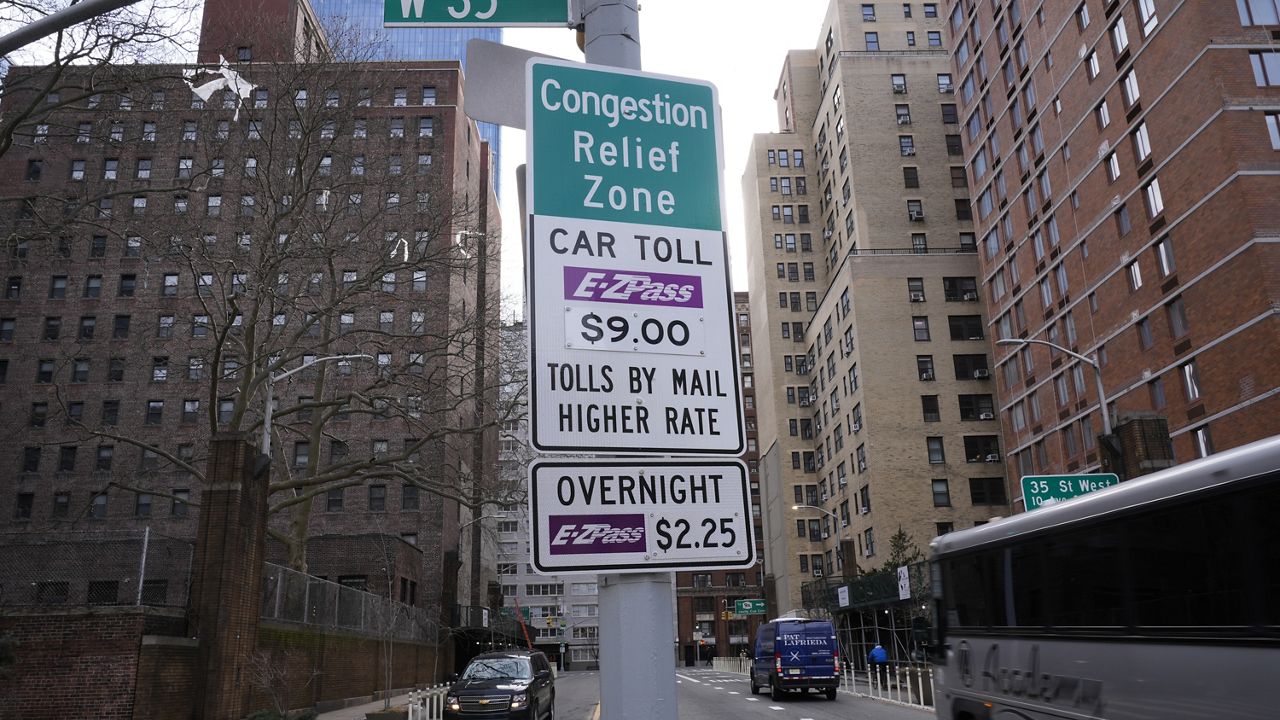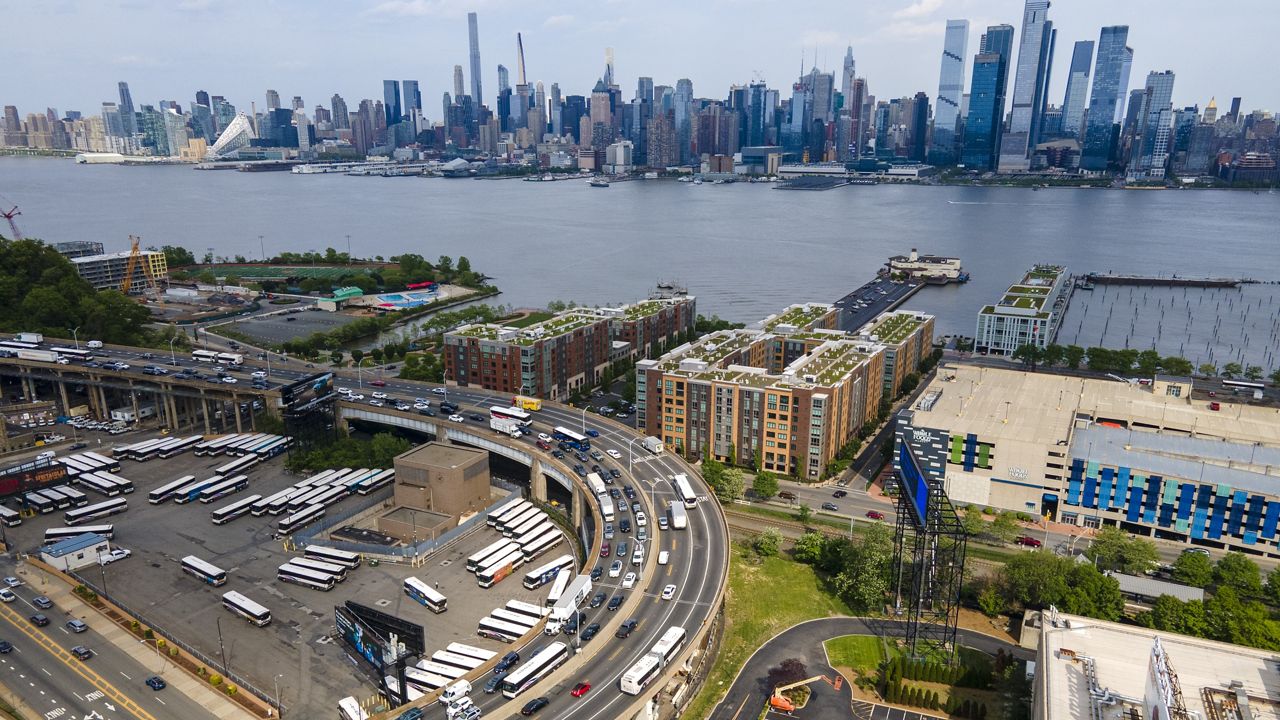Congestion pricing took effect in New York City on Jan. 5, 2025, with Gov. Kathy Hochul and the MTA touting it as a way to unclog traffic-prone streets and improve public transportation infrastructure.
After pausing an original version of the plan that was set to start earlier this year, Hochul announced an updated plan on Nov. 14 with lower tolls for cars entering Manhattan south of 60th Street.
Focusing on the lower half of Manhattan, the plan aims to curb traffic jams, cut emissions and create a more fluid urban landscape. Here’s what you need to know.
What is congestion pricing?
Congestion pricing is a policy that charges drivers a fee for entering certain designated zones within a city, typically during stated or peak hours. The aim is to reduce traffic congestion, and to encourage the use of public transportation and other alternative modes of travel.
Where is the tolling zone?
The Manhattan congestion pricing zone, also known as the Central Business District, includes all of Manhattan south of Central Park. The congestion pricing toll will apply to all vehicles on roads at and below 60th Street, except for major highways. The FDR Drive, the West Side Highway and the Battery Park underpass will be exempt.
When will congestion pricing take effect?
Congestion pricing began in Manhattan at midnight on Jan. 5, 2025.
How much will drivers be charged?
Under the new plan, the toll will be set at $9 for passenger vehicles with E-ZPass through 2027. The toll will increase to $12 from 2028 through 2030 before rising to $15 starting in 2031, the MTA said in a newsletter. Passenger vehicle drivers will be tolled once per day.
The toll structure will be in effect from 5 a.m. to 9 p.m. on weekdays and from 9 a.m. to 9 p.m. on weekends.
During overnight hours, all vehicles will be charged 75% less than they are charged during the day, "to reduce diversions and encourage off-hours truck deliveries," according to Hochul. Overnight tolls for passenger vehicles will be reduced to $2.25.
Drivers without E-ZPass will be charged $13.50 during the peak period and $3.30 during overnight hours.
Rates for commercial vehicles have also been adjusted. Under the new plan, tolls for small trucks and non-commuter buses will be $14.40 during peak hours and $3.60 overnight. While tolls for large trucks and sightseeing buses will be $21.60 peak and $5.40 overnight.
The toll for motorcycles with E-ZPass will be $4.50 peak and $1.05 overnight. Motorcycle drivers will also only be tolled once per day.
Are there any discounts or exemptions?
The original plan from the Traffic Mobility Review Board noted some discounts. Those discounts were reduced by 40% as part of the revised plan. They include:
- A 50% discount for low-income drivers after the first 10 trips in one calendar month.
- A $3 rebate for drivers going through the Holland, Lincoln, Hugh Carey and Queens Midtown tunnels.
- Yellow taxis avoid the toll, instead passing a 75-cent fare charge onto their passengers. For-hire vehicles like Uber and Lyft will charge passengers an extra $1.50 a ride. These numbers are also lower than they were in the initial proposal.
- Some private buses that run regular schedules like Megabus and Hampton Jitney, and some school buses, will be exempt from the toll.
Additionally, the MTA announced two exemption plans in late February for New Yorkers with disabilities that are still part of the revised plan. The first plan is called the Individual Disability Exemption Plan and enables people with disabilities to register their own vehicle, or designate another, for toll exemption. The second plan is called the Organizational Disability Exemption Plan, and exempts registered public and private organizations transporting people with disabilities. Residents and businesses can apply for discounts and exemptions via the MTA's website.
Where does the money go?
By law, the congestion pricing policy must generate at least $1 billion that will be allocated to the MTA, which would sell bonds in order to generate $15 billion for its capital plan. That funding would then be used to help fund critical projects, such as infrastructure improvements, maintenance, and upgrades to buses and subways, including the extension of the Second Avenue Subway to East Harlem.
What impact will this have on the environment?
According to an environmental assessment by the MTA, the number of vehicles entering the congestion zone daily would decline between 15% and 20%, and daily truck traffic could decline anywhere from 21% to 81%. These drops would significantly lower carbon emissions in the congestion zone, which would contribute to better air quality and assist the city’s efforts to address climate change.
However, areas outside the congestion zone would likely see traffic and pollution increases – especially in the south Bronx along the Cross Bronx Expressway and on the Staten Island Expressway – as motorists seek detours around the new tolls.
What do opponents of the policy have to say?
Opponents of the congestion pricing policy have raised concerns about its potential effects.
Some critics argue that it could disproportionately impact lower-income individuals and those who live in areas of the city without mass transit options, who rely on driving and cannot easily switch to public transportation.
Additionally, some have worries about the effectiveness in the policy reducing traffic, believing it might lead to increased costs for businesses and consumers.
Demand for parking is also a concern, as competition for spots could increase around subway stations and bus stops in areas just outside the congestion zone as people seek to avoid tolling machines.
Reporting by Dan Rivoli contributed to this article.








_PKG_CONGESTION_PRICING_HISTORY_CG)